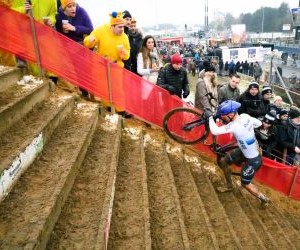Learn how to deal with punctures on long rides with prevention tips, repair techniques, and smart gear choices to keep rolling without stress.
WHAT ARE THE BEST CYCLING APPS FOR BEGINNERS?
Starting your cycling journey can be overwhelming, but the right apps make it easier, smarter, and way more fun. From GPS route tracking and indoor workouts to performance analytics and community motivation, beginner-friendly cycling apps can level up your ride—without requiring deep tech skills or expensive gear. This guide breaks down the top cycling apps for new riders, covering what each does best, how to use them, and why they matter when you’re just getting started.

Why beginners should use cycling apps
Cycling apps offer more than data—they give structure, encouragement, and insight. For beginners, they act like virtual coaches, GPS guides, and ride journals all rolled into one. With just a smartphone, you can track your progress, find safe routes, connect with other riders, and stay motivated to keep pedaling.
Key benefits for new cyclists
Route guidance: Avoid unsafe roads and discover bike-friendly paths in your area.
Fitness tracking: See how far, how fast, and how often you ride with easy-to-read stats.
Progress motivation: Set goals and get digital kudos or badges that keep you inspired.
Community support: Join online clubs or challenges that make riding feel less lonely.
Safety features: Use apps that include crash alerts, live tracking, or SOS tools for peace of mind.
You don’t need a bike computer or smart trainer to benefit. Most cycling apps work with basic gear and any smartphone, making them perfect tools for learning and growing as a new cyclist.
Top beginner-friendly cycling apps
The best cycling app depends on your goals—commuting, fitness, exploration, or fun. These standout apps are trusted by cyclists worldwide and are especially friendly for beginners who want an intuitive, helpful start to their cycling experience.
1. Strava – Best all-around tracker with community
Strava is the go-to app for cyclists at every level. It tracks distance, time, elevation, pace, and calories, then lets you share your rides with friends or clubs. The free version is powerful, while the premium tier adds route planning, segment analysis, and training tools. Ideal for social motivation and steady progress.
2. Komoot – Best for route planning and exploration
Komoot specializes in creating custom cycling routes based on your fitness level, terrain preference, and bike type. It’s intuitive, offline-capable, and great for beginners looking to explore safely without guessing where to go. Voice navigation makes it feel like Google Maps, but for cyclists.
3. Zwift – Best for indoor cycling and training
For riders training indoors with a smart trainer, Zwift offers immersive virtual worlds and structured workouts. It gamifies training with races, routes, and group rides. New cyclists benefit from guided plans and a low-pressure environment to build fitness year-round.
4. Ride with GPS – Best for route recording and analysis
Ride with GPS offers robust ride recording and in-depth stats, but it shines in its simple navigation interface and cue sheet support. Beginners love its turn-by-turn audio directions and offline maps—perfect for long rides in new areas.
5. MapMyRide – Best for fitness-focused riders
Part of the Under Armour fitness suite, MapMyRide is ideal for those who want to track rides alongside runs, walks, or gym sessions. It’s beginner-friendly, offers gear tracking, and includes voice feedback for on-the-go motivation.
Honorable mentions:
Relive – Creates cool 3D videos of your rides for social sharing.
Bikemap – Features global route recommendations and traffic alerts.
TrainerRoad – Best for structured training once you're ready to level up.
Wahoo Fitness – Great if you own Wahoo gear or want a clean tracking app.
Each app has strengths—test a few to see which fits your style. Most offer free versions that are fully functional for casual riders just starting out.
Tips for getting started with cycling apps
Apps can improve your ride—but only if you use them in ways that support your goals, not distract from them. Here’s how to use cycling apps effectively without getting overwhelmed or overly dependent on the numbers.
Maximize your app experience
Start with one or two apps: Pick one for tracking (like Strava) and one for navigation (like Komoot). Build confidence before layering more.
Don’t chase numbers: Focus on consistency and enjoyment over speed or stats, especially early on.
Use audio cues: Voice updates help keep your eyes on the road and hands on the bars.
Download offline maps: If you're exploring new routes, ensure you have access even without a data signal.
Track your progress: Log milestones like longest ride, first climb, or new routes—it keeps motivation high.
Most importantly, let the app enhance—not control—your ride. The goal is confidence, safety, and enjoyment. Use technology to learn your patterns, find new rides, and celebrate your wins—but don’t forget to look up, breathe, and enjoy the ride itself.
YOU MAY ALSO BE INTERESTED






